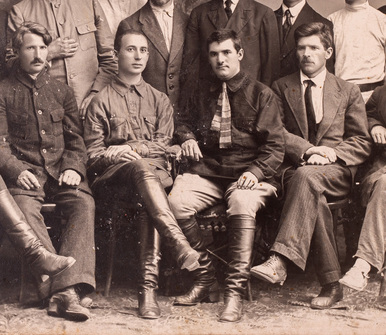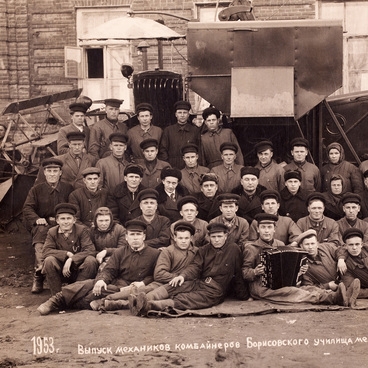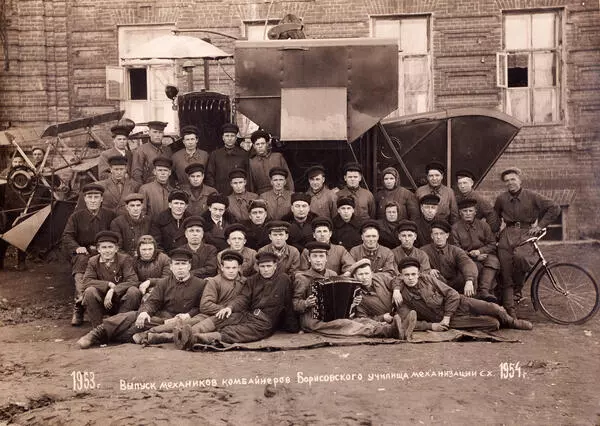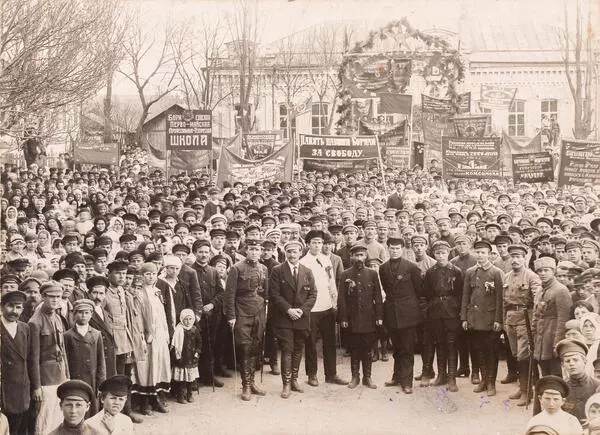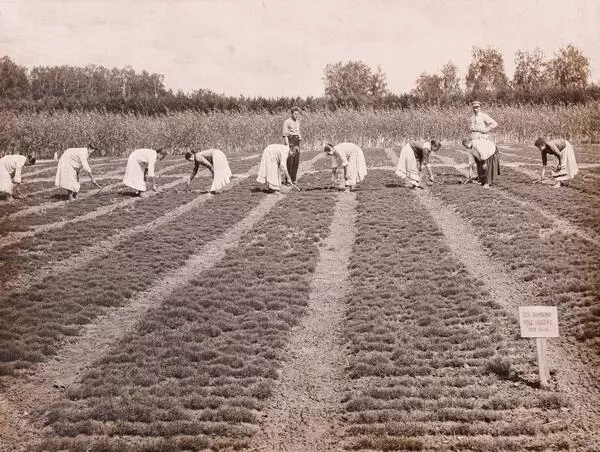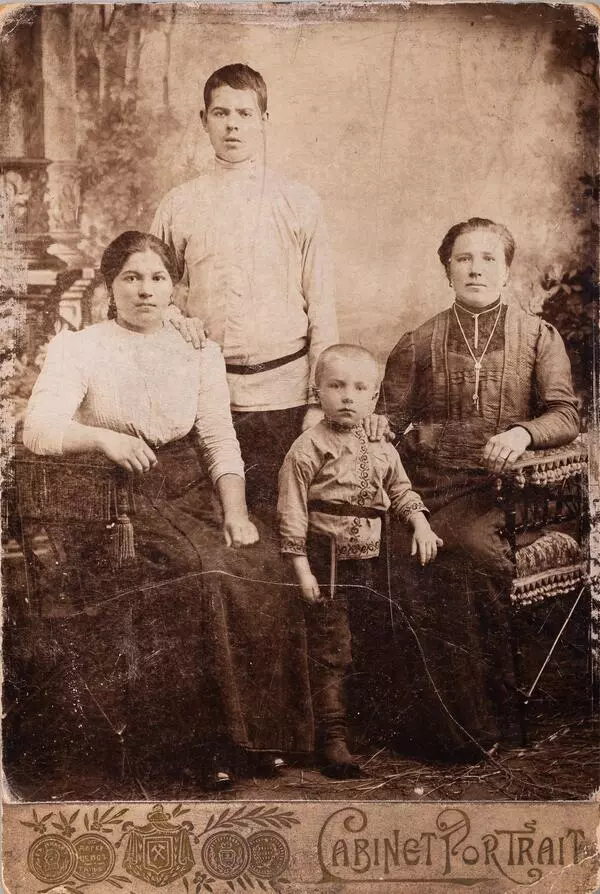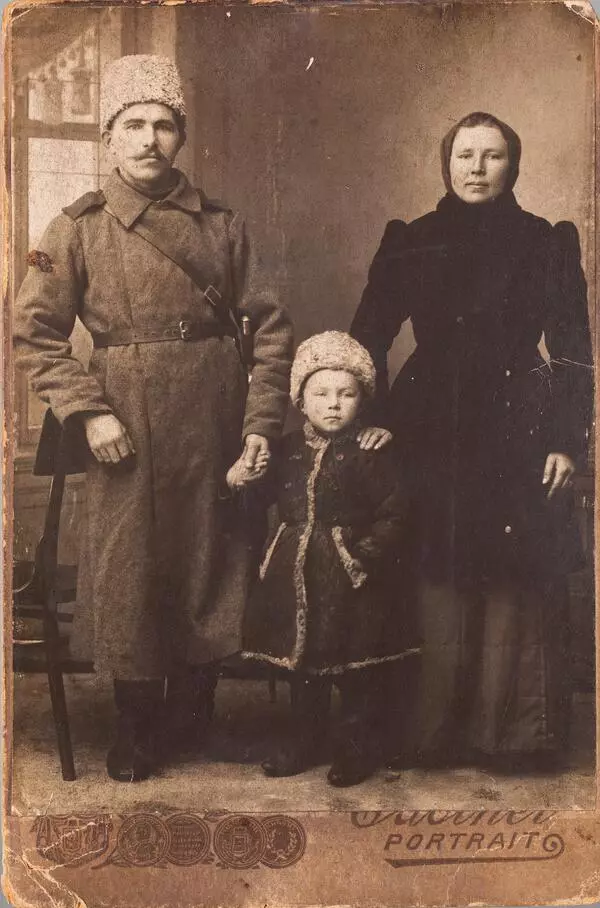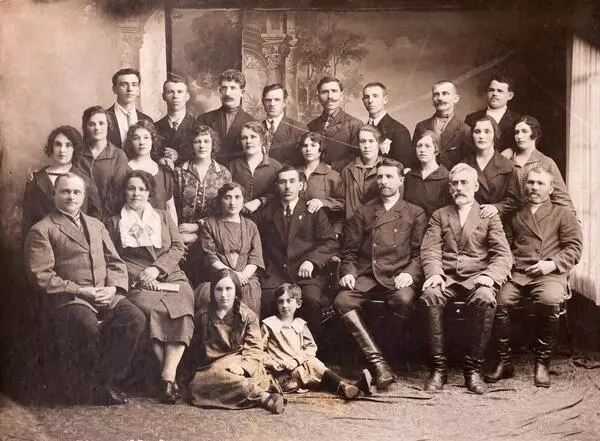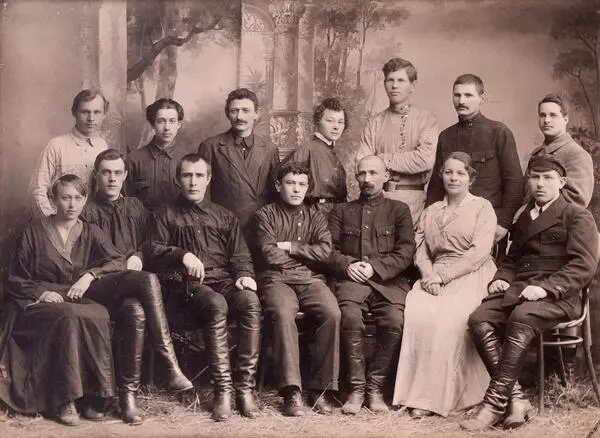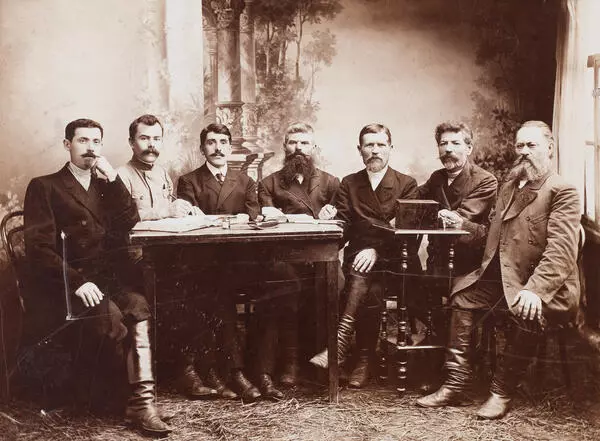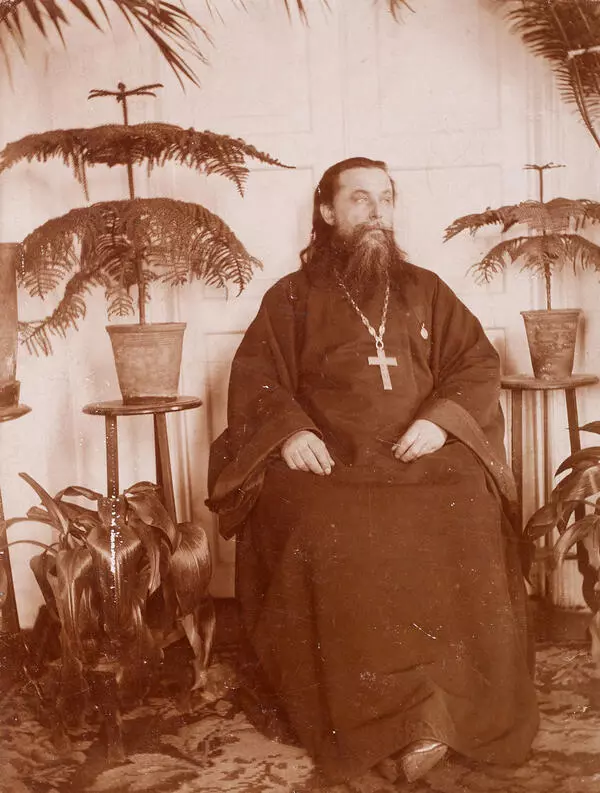The first photo studio appeared in the Borisovskaya Sloboda of the Kursk Governorate in the late 19th century. Its owner was Borisovka’s first professional photographer Grigory Vasilyevich Safontsev. In a house on the central street (now Pervomaiskaya Street), he organized a studio and equipped a laboratory on the veranda.
Safontsev’s artistic heritage speaks about the breadth of his professional interests. His works include landscapes, views of local landmarks, and historical chronicles (for example, the opening of the monument to Alexander II in Borisovka). However, he mainly took group and individual photos. The photographer’s models were most often representatives of the intelligentsia, as well as merchants and peasants.
High quality images required long and painstaking work. It took about two months to process one image — to develop the photo using agents and manually correct some external imperfections of his models. The finished photo was attached onto a cardboard backing, which served as a firm basis and at the same time as an advertisement of the studio and a design element. It indicated the name of the photographer, the name and address of the studio, the date of the photoshoot, and featured a personal stamp of the photographer.
Many historians and art experts have noted the rare talent of the residents of Borisovka, in particular icon painters. In 1902, on the memorial day of the sloboda’s patron saint, Prince Boris, the opening of a free Educational Icon Painting School took place. It was designed to be completed in four years. About 500 people became students there in the first years. The training began with preparatory work — the production of tempera paint and the preparation of the board: applying glue, priming, grinding, and transferring the drawing. Next, they studied the features of iconographic images and their application with a pencil and brush. Then they started working with paint: covering the background, practicing painting techniques and painting the hands and faces. Only after that, the students began to learn various iconographic styles — Greek, Moscow, Novgorod, and Stroganov ones — and to paint holy images.
The photo presented in the exhibition was taken “at the location”: graduates of the icon painting school stand and sit in front of it; judging by their clothes, the commemorative picture was taken in late autumn.
Safontsev’s artistic heritage speaks about the breadth of his professional interests. His works include landscapes, views of local landmarks, and historical chronicles (for example, the opening of the monument to Alexander II in Borisovka). However, he mainly took group and individual photos. The photographer’s models were most often representatives of the intelligentsia, as well as merchants and peasants.
High quality images required long and painstaking work. It took about two months to process one image — to develop the photo using agents and manually correct some external imperfections of his models. The finished photo was attached onto a cardboard backing, which served as a firm basis and at the same time as an advertisement of the studio and a design element. It indicated the name of the photographer, the name and address of the studio, the date of the photoshoot, and featured a personal stamp of the photographer.
Many historians and art experts have noted the rare talent of the residents of Borisovka, in particular icon painters. In 1902, on the memorial day of the sloboda’s patron saint, Prince Boris, the opening of a free Educational Icon Painting School took place. It was designed to be completed in four years. About 500 people became students there in the first years. The training began with preparatory work — the production of tempera paint and the preparation of the board: applying glue, priming, grinding, and transferring the drawing. Next, they studied the features of iconographic images and their application with a pencil and brush. Then they started working with paint: covering the background, practicing painting techniques and painting the hands and faces. Only after that, the students began to learn various iconographic styles — Greek, Moscow, Novgorod, and Stroganov ones — and to paint holy images.
The photo presented in the exhibition was taken “at the location”: graduates of the icon painting school stand and sit in front of it; judging by their clothes, the commemorative picture was taken in late autumn.

